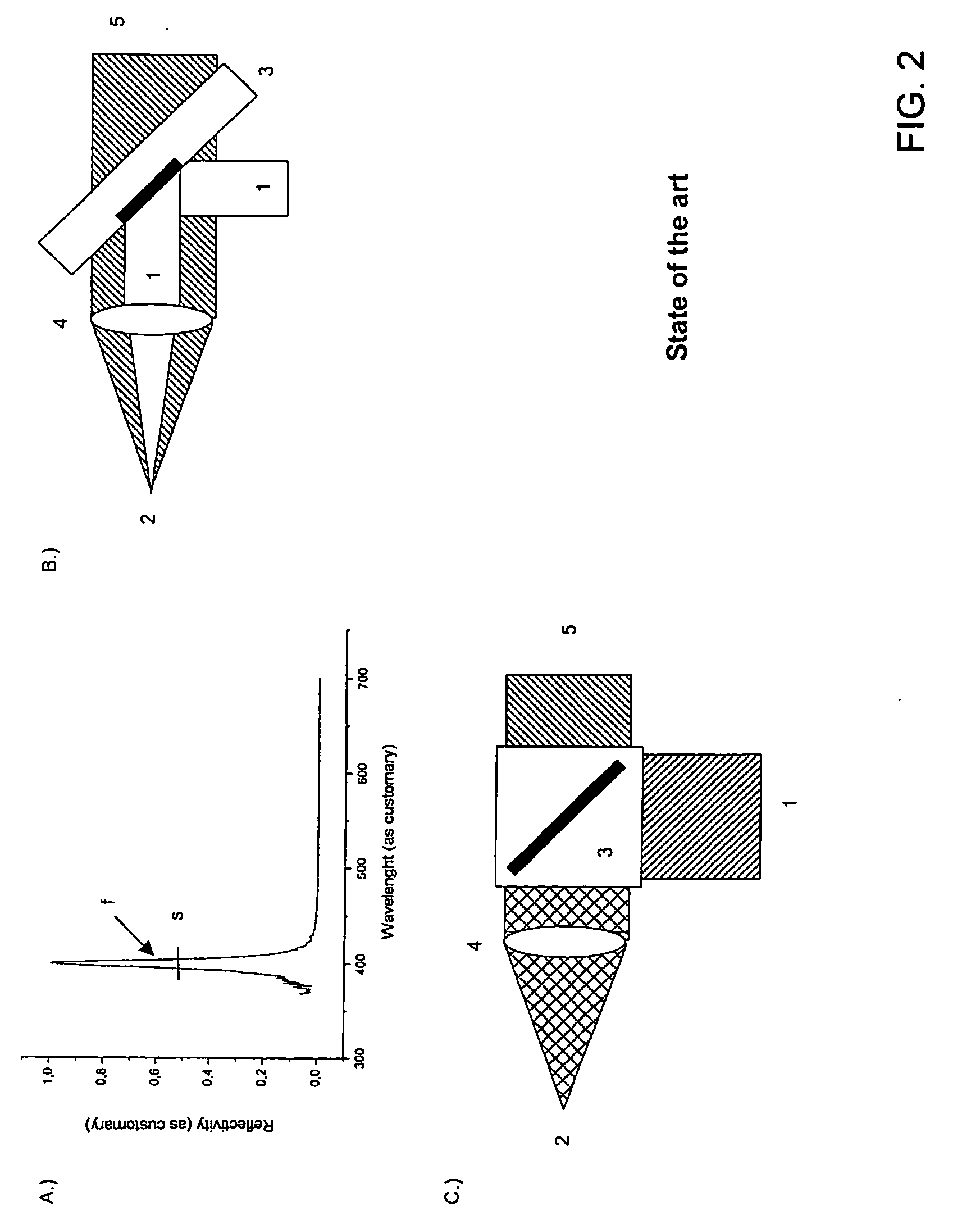Device for controlling light radiation
a technology of light radiation and control device, which is applied in the field of microscopy methods and arrangements, can solve the problems of poor efficiency of separation of excitation light from emitted light, poor optical resolution of arrangement, and poor efficiency of detection
- Summary
- Abstract
- Description
- Claims
- Application Information
AI Technical Summary
Benefits of technology
Problems solved by technology
Method used
Image
Examples
Embodiment Construction
[0057] A plurality of arrangements, with which the light radiation (hereinafter the detection light), which is excited in a specimen and / or which is backscattered by the specimen, can be separated especially efficiently from the excitation light. Thus, the arrangements are especially suitable for fast multi-tracking with a spectrally adjusted, flexible separation of the excitation radiation from the detection light. In the following context, light radiation emitted by the specimen is light that is radiated from the specimen preferably in a large solid angle. This light radiation is usually not polarized (unpolarized) and / or the magnitude of the polarization differs from the polarization of the excitation light. They are in particular fluorescent light, luminescent light and backscattered light that are excited in the specimen.
1. Functional Principle of the Arrangement for Separating the Excitation Light from the Detection Light in a Variable Manner
[0058]FIGS. 6A and 6B depict an ...
PUM
| Property | Measurement | Unit |
|---|---|---|
| edge length | aaaaa | aaaaa |
| wavelength | aaaaa | aaaaa |
| angle | aaaaa | aaaaa |
Abstract
Description
Claims
Application Information
 Login to View More
Login to View More - R&D
- Intellectual Property
- Life Sciences
- Materials
- Tech Scout
- Unparalleled Data Quality
- Higher Quality Content
- 60% Fewer Hallucinations
Browse by: Latest US Patents, China's latest patents, Technical Efficacy Thesaurus, Application Domain, Technology Topic, Popular Technical Reports.
© 2025 PatSnap. All rights reserved.Legal|Privacy policy|Modern Slavery Act Transparency Statement|Sitemap|About US| Contact US: help@patsnap.com



